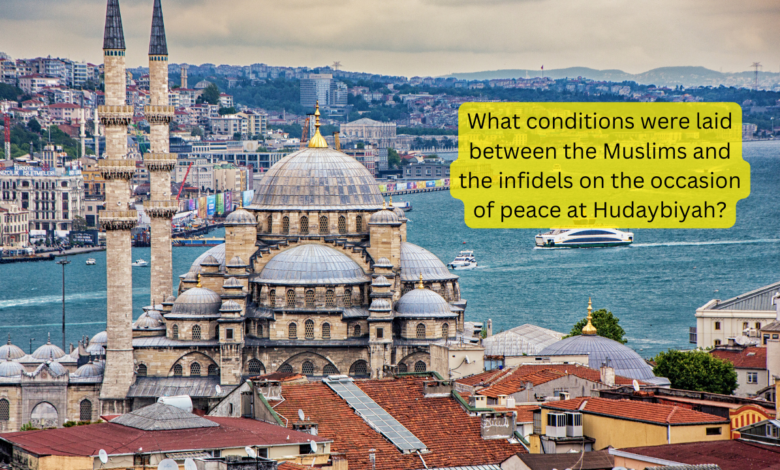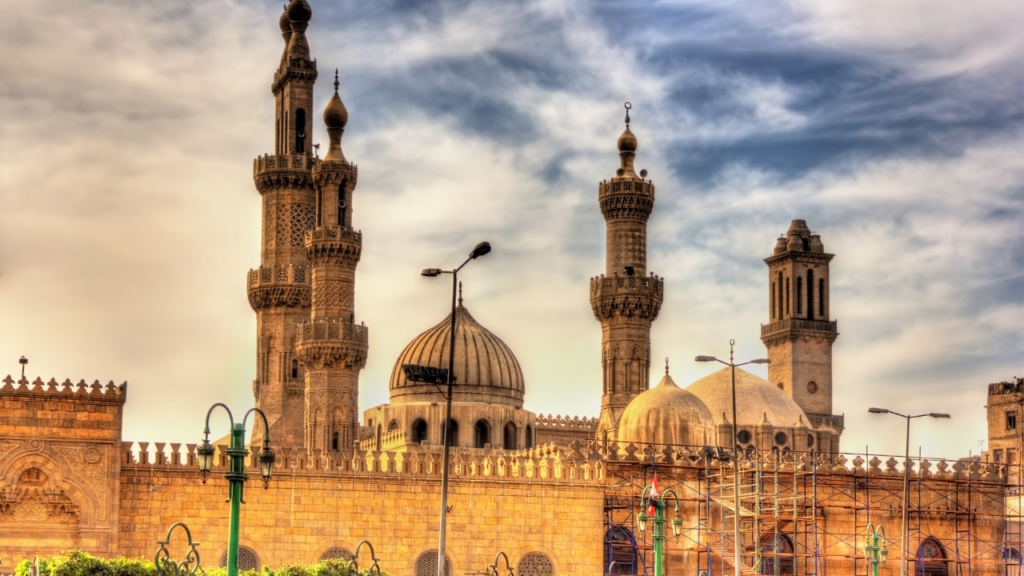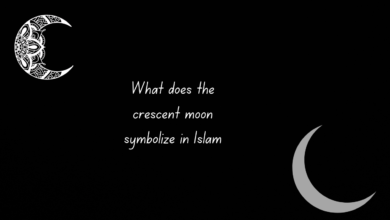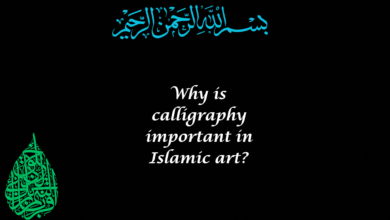What conditions were laid between the Muslims and the infidels on the occasion of peace at Hudaybiyah?
"Unpacking the Historic Treaty of Hudaybiyah: Terms Between Muslims and Infidels for Peace"

What conditions were laid between the Muslims and the infidels on the occasion of peace at Hudaybiyah?
The peace agreement at Hudaybiyah, which took place in 628 CE, is significant because it marked a turning point in the early history of Islam. It allowed for a temporary truce between the Muslims and the Quraysh, who were considered infidels at the time.

Introduction
The Treaty of Hudaybiyah, a pivotal moment in Islamic history, marked a significant turning point in the relationship between the Muslims of Medina and the infidels of Mecca. This agreement, signed in the 6th year of the Islamic calendar (628 CE), brought an end to years of conflict and laid the foundation for a period of relative peace in the Arabian Peninsula. In this article, we will explore the conditions that were negotiated between the Muslims and the infidels on this historic occasion.
Background
The conflict between the Muslims and the Quraysh tribe of Mecca had been escalating for several years. The Muslims, led by the Prophet Muhammad, had faced persecution and hostility in Mecca, leading to their migration to the city of Medina in 622 CE. Despite finding a safe haven in Medina, tensions remained high, and skirmishes between the two groups continued.
The Treaty of Hudaybiyah
In 628 CE, the Prophet Muhammad and a group of Muslims set out to perform the pilgrimage to Mecca, a religious obligation for all Muslims, despite the ongoing hostility. They carried no weapons and intended to complete the pilgrimage peacefully. The Quraysh, fearing a potential armed conflict, sent envoys to negotiate with the Muslims at a location called Hudaybiyah, a few miles outside Mecca.
After intense negotiations, the two parties reached an agreement known as the Treaty of Hudaybiyah. The treaty contained several key conditions:
- Ceasefire: The most fundamental aspect of the treaty was a ten-year ceasefire, during which there would be no hostilities, raids, or battles between the Muslims and the Quraysh. This ceasefire provided much-needed stability in the region.
- Safe Passage: The treaty allowed for peaceful interactions between the Muslims and the Quraysh. Muslims could now engage in trade, establish alliances, and even intermarry with the Quraysh, fostering a sense of normalcy and cooperation.
- Return of the Meccan Fugitives: The treaty stipulated that any Meccan who converted to Islam and fled to Medina would be returned to the Quraysh, a clause that caused some discontent among the Muslims. However, this condition was accepted as a gesture of goodwill and trust.
- Pledge of Neutrality: The treaty allowed other tribes in Arabia to choose sides, either aligning with the Muslims or the Quraysh, without fear of retaliation from either party. This neutral stance contributed to the growing influence and acceptance of Islam.
- Opportunity for Peaceful Conversion: The Treaty of Hudaybiyah provided an opportunity for peaceful engagement and dialogue, allowing more people to learn about Islam. This led to an increase in conversions to the faith.
Also Check
- Who was Abu Bakr Siddiq?
- Which is the companion of Hazrat Muhammad (PBUH) who was with you the most during the wars?
- Can Muslims drink alcohol?
- Why do Muslims cover their face?
- Why do Muslims wear Turbans?
Conclusion
The Treaty of Hudaybiyah is a remarkable example of diplomacy and pragmatism in the midst of a long-standing conflict. While some Muslims initially felt uneasy about certain conditions, the wisdom of the Prophet Muhammad in negotiating this treaty became evident in the years that followed. The ten-year ceasefire allowed Islam to flourish peacefully, and it ultimately paved the way for the peaceful conquest of Mecca in 630 CE, as the Quraysh breached the treaty.
The Treaty of Hudaybiyah demonstrated the Prophet Muhammad’s commitment to resolving conflicts through peaceful means when possible. It serves as a testament to the importance of diplomacy, negotiation, and compromise in the pursuit of peace, even in the face of deep-seated animosity.

FAQs about the Conditions of Peace at Hudaybiyah
What was the significance of the peace agreement at Hudaybiyah in Islamic history?
The peace agreement at Hudaybiyah, which took place in 628 CE, is significant because it marked a turning point in the early history of Islam. It allowed for a temporary truce between the Muslims and the Quraysh, who were considered infidels at the time.
What were the main conditions laid out in the peace agreement at Hudaybiyah?
The conditions of the peace agreement at Hudaybiyah included:
A 10-year truce between the Muslims and the Quraysh, during which there would be no hostilities or warfare.
A commitment from both parties to cease any alliances with tribes hostile to the other side.
Permission for the Muslims to perform the pilgrimage (Hajj) to Mecca the following year, without any hostile intent.
A clause allowing for anyone from the Quraysh to convert to Islam and join the Muslim community without facing opposition.
Why did the Muslims agree to the conditions at Hudaybiyah, even though some appeared disadvantageous?
The Muslims accepted the conditions at Hudaybiyah for several reasons. Firstly, they were in a weakened state and had fewer resources for warfare compared to the Quraysh. Secondly, the Prophet Muhammad received a divine revelation urging him to accept the terms. Lastly, it provided a period of peace that allowed Islam to grow and spread peacefully.
Did the Muslims abide by the peace agreement at Hudaybiyah?
Yes, the Muslims strictly adhered to the terms of the peace agreement at Hudaybiyah. They refrained from any hostilities or attacks on the Quraysh during the agreed-upon truce period.
How did the peace agreement at Hudaybiyah benefit the Muslims in the long run?
The peace agreement at Hudaybiyah had several long-term benefits for the Muslims. It provided a period of stability and allowed Islam to flourish. Additionally, it led to the signing of various alliances with other Arabian tribes, strengthening the Muslim community. When the Quraysh violated the truce, it gave the Muslims a moral high ground and justified their eventual conquest of Mecca in 630 CE.
When did the peace agreement at Hudaybiyah end, and what events led to its termination?
The peace agreement at Hudaybiyah ended in 630 CE when the Quraysh violated its terms by supporting an attack on an allied tribe of the Muslims. This violation led to the conquest of Mecca by the Muslims and the establishment of Islamic control over the city.
How does the peace agreement at Hudaybiyah serve as a lesson in Islamic history?
The peace agreement at Hudaybiyah serves as a lesson in patience, diplomacy, and the importance of adhering to agreements even in the face of adversity. It illustrates the Prophet Muhammad’s wisdom in accepting terms that appeared unfavorable at first but ultimately benefited the Muslim community in the long run.






